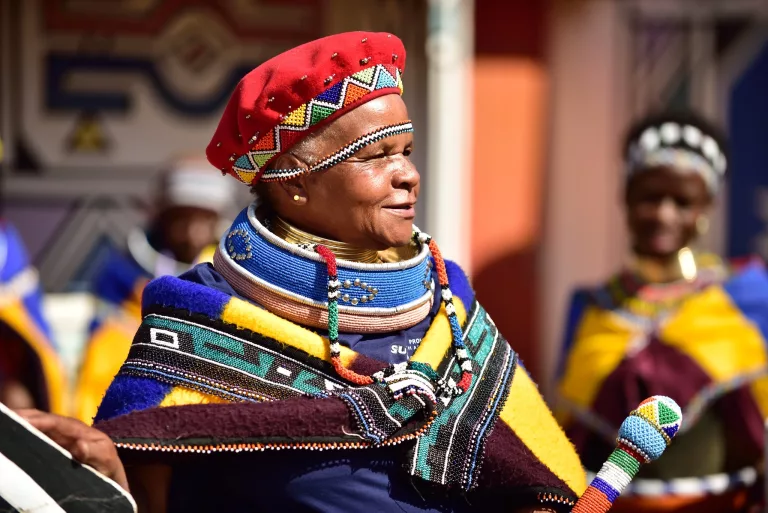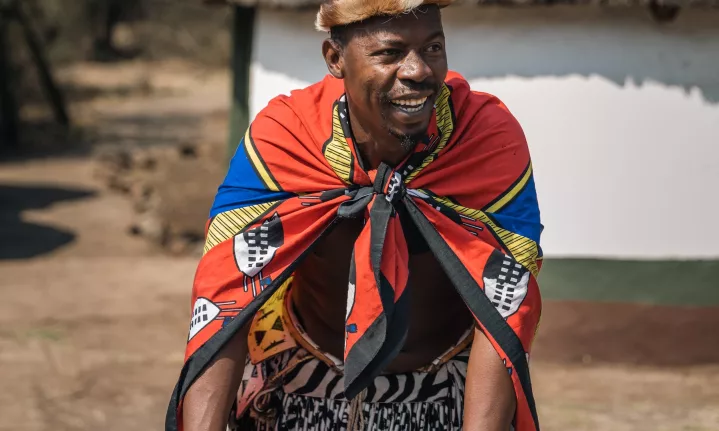South African Culture Today Things To Know Before You Get This
South African Culture Today Things To Know Before You Get This
Blog Article
Some Of South African Culture Today
Table of ContentsLittle Known Questions About South African Culture Today.The South African Culture Today StatementsThe Best Strategy To Use For South African Culture TodayHow South African Culture Today can Save You Time, Stress, and Money.Facts About South African Culture Today UncoveredUnknown Facts About South African Culture Today
This adheres to with vocal singing and drum whipping. The couple then meet the elders and discuss the value of their union. An issue of significance in Zambian towns is the passing away of enjoyed ones. All participants of the village put cash, time and initiative together for the interment of the deceased.During the grieving duration; guys stay outside your home and the women remain inside the home of the deceased. After speaking about the dead, the town strolls to the location of interment to say their last goodbyes. Music and dancing is an extremely vital element of the Zambian society. The different tribal devices have their own dancing types; nevertheless, makishi is usual amongst all tribes.
All about South African Culture Today
When it concerns songs, drums are utilized one of the most, with a range of drumming events. In Zambia, majority of the individuals are Christian; Protestant and Roman Catholic. There are little groups of Muslims and Hindus, with the rest complying with local indigenous tribal beliefs.

South African heritage and culture is tremendously varied, and includes various groups of people who each have their own customs and ideas. Having such a variety of individuals and societies is what makes South Africa so unique. In the true sense of the phrase, we are a rainbow country.
South Africa has roughly three hundred thousand Portuguese people living in it. Making it the 7th on the listing of nations with one of the most Portuguese individuals in it beyond Portugal. Portuguese is not only a culture, yet it is additionally a language and a nationality. Portuguese people stem from the nation of Portugal in Europe, nonetheless, as a result of Portugal (like several various other nations in Europe) exploring the world and conquering other countries throughout the 15th 20th centuries, South Africa has what we call Portuguese South African's living in it.
More About South African Culture Today
Amongst the famous features of the topography is a plateau that covers almost 2 thirds of the center of the nation. The plateau complex climbs toward the southeast, where it culminates in the Drakensberg range, part of an escarpment that divides the plateau from the coastal areas. The Drakensburg consists of Champagne Castle, the highest height in the country.
The region north of the Witwatersrand, called the bushveld, slopes downward from east to west towards the Limpopo River, which forms the worldwide border. The western area of the plateau, the middleveld, also descends in the direction of the west and varies in altitude between the highveld and bushveld. Between the Drakensburg and the eastern and southern coast, the land descends to the sea.
Nearer the coastline there is a low-lying level called the eastern lowveld. Southwest of the plateau the country comes to be progressively a lot more dry, providing means to the stony desert of the Great Karroo, bordered on the eastern by the lower, better watered plateau of the Little Karroo. Dividing the completely dry southern inside from the sandy coastal of the southerly coast and West Cape is one more array, the Langeberg.
How South African Culture Today can Save You Time, Stress, and Money.
The country's racially, ethnically, and politically split history has generated nationwide and subnational icons that still operate as icons of the country, and others icons that are approved just by particular teams. The monoliths to white settler conquest and political dominance, such as the Afrikaner Voortrekker ("pioneer") Monument in Pretoria and the Rhodes Monolith recognizing the British colonial empire contractor and Cape head of state Cecil Rhodes, remain sectarian symbols.
The very first modern residents were the San ("bushman") hunter-gatherers and the Khoi ("Hottentot") peoples, that herded livestock (South African culture today). The San might have been existing for thousands of years and left evidence of their visibility in hundreds of ancient cavern paints ("rock art"). Bantu-speaking clans that were the forefathers of the Nguni (today's amaZulu, amaXhosa, amaSwazi, and vaTsonga peoples) and Tswana-Sotho language teams (today's Batswana and Southern and Northern Basotho) migrated down from eastern Africa as very early as the fifteenth century

The two previous republics of the Orange Free State and Transvaal (South African Republic) were established by Afrikaner inhabitants that beat and dispossessed the Basotho and Batswana. Lesotho would have been forcibly integrated into the Orange Free State without the expansion of British security in 1869. The best unification of the country arised from the South African Battle (18991902) in between the British and both Afrikaner republics, which minimized the country to spoil at the start of the twentieth century.
Afrikaners historically considered themselves the only true South Africans and, while approving complete citizenship to all residents of European descent, rejected that standing to individuals of color until the democratic change of 1994. British South Africans keep a feeling of cultural and social connection to Great Britain without compromising their identity as South Africans.
How South African Culture Today can Save You Time, Stress, and Money.
The diversity and fragmentation within ethnic look at these guys groups and the balance of tensions between those groups throughout the twentieth century avoided interethnic civil dispute. While intergroup stress over resources, entitlements, and political prominence stay, those conflicts are as likely to match Zulu versus Zulu as Zulu against Xhosa or African against Afrikaner.
From colonial India, British vendors and administrators brought the curved steel decorative roof coverings and slender lace job columns that still epitomize the terraces of cottages in the areas and cities throughout the country. Homes of worship add a vital building facet also in the smallest towns. click here for more Along with the rising steeples and timeless stonework of Afrikaans Dutch Reformed churches, Anglican churches, synagogues, mosques, and Hindu shrines offer selection to the spiritual architectural scene.

Slaughtering and the developing of traditional grain beer are essential in safeguarding the engagement and a good reputation of the ancestors that are taken into consideration the guardians of good luck, success, and wellness. Indian neighborhoods keep their native culinary traditions and apply them on Islamic and Hindu routine and ceremonial occasions. Afrikaners and Coloured individuals collect at weekends and special celebrations at multifamily barbecues called braais, where community bonds are enhanced.
Due to the fact that this was the primary economic business of both black Africans and white homesteaders, problem between those groups focused on the belongings of grazing land and animals. In 1867, the find out this here largest ruby down payments in the globe were uncovered at Kimberley in the west main location. The wealth from those fields helped finance the exploitation of the best gold coral reef on the planet, which was uncovered on the Witwatersrand in 1886.
The Ultimate Guide To South African Culture Today
This resulted in misconceptions and calculated misstatement in the dealings of white settlers and government officials with African principals during the early american duration (South African culture today). In the establishment of African reserves, some aspects of communal and primarily "tribal trust fund" land tenure were protected, and even in white backwoods, types of public period were still exercised in locations with African neighborhoods
After the autonomous change of 1994, programs for land restitution, redistribution, and reform were set up, however development has actually been slow-moving. The white minority still controls eighty percent of the land. Following farming land invasions in Zimbabwe, the Division of Land Affairs has vowed to speed up land redistribution.
Report this page